(This is the second of three daytrips in the San Francisco in 3 Days series.)
On the second day of your visitor’s trip, it is time to show off this city’s finest assets: its neighborhoods. We first drop in on Japantown, one of only three Japantowns in the United States. We then spend quite a while showing off the most beautiful urban neighborhood in the United States, Pacific Heights. We drop down into the Marina for a picnic on San Francisco Bay and photos of the Golden Gate Bridge. Then, we taxi off to the Castro and seek sun in the Mission. This is all wrapped up with dinner on Divisadero St and an evening stroll in the Lower Haight. Phew! Let’s get started…
What you’ll need to bring:
Comfortable walking shoes
Windbreaker/light jacket
Recommended Itinerary (11 hours, walk 5 miles):
1. Walk around Japantown’s Japan Center, shop at Kinokuniya Bookstore
2. Window shopping on Fillmore St.
3. Stroll along Pacific Heights ridge, overlooking San Francisco Bay
4. Plunge down into the Marina District, and procure lunch supplies
5. Picnic on Marina Green or Fort Mason
6. Taxi to Castro District
7. Stroll through Castro, down to the Mission District
8. Walk along the Valencia Corridor in the Mission
9. Head back to your apartment or hotel to get some rest
10. Dinner at Bar Crudo on Divisadero Street
11. Late night stroll in the Lower Haight
1. Walk around Japantown’s Japan Center, shop at Kinokuniya Bookstore
Our day begins on the corner of Fillmore and Post St in San Francisco’s Japantown. I recommend taking a taxi to get here, as neither BART nor the MUNI metro have stops nearby. You can take the bus, though, depending on your visitor’s affinity for buses.
The presence of a Japantown is a unique feature to California – there are only 3 official Japantowns in the United States, in San Francisco, San Jose, and Los Angeles. Japanese emigration isn’t common at all; according to estimates by the Association of Nikkei and Japanese Abroad, only 2% of ethnic Japanese live outside of Japan.
Although people started emigrating from Japan to San Francisco in the late 1800’s, San Francisco’s Japantown was only established after the 1906 earthquake. Japantown used to be much larger, encompassing much of the Western Addition neighborhood. When the Japanese were interred during WWII, though, this neighborhood was left vacant. What we see now is only a remnant of that once bustling neighborhood.
Walk along Post St for a block and a half until you come to the Japan Center Shopping Center plaza on your right. Walk through the plaza and enter the doors on your right.
It may seem odd that I’ve directed you to what is, for all appearances, a shopping mall. Actually, multi story shopping malls are probably more common in Tokyo than any other metropolis. So, this isn’t an American phenomenon at all, and once you enter the doors, you will see that this is unlike any shopping mall you’ve been in before.
Walk straight ahead, across the “bridge” connecting the two buildings that make up the mall. Ahead of you will be one of my favorite stores in San Francisco, the Kinokuniya Bookstore. Fine, this is all probably more appropriate for your 11 yr old niece, but I’m sure she would love one of their brightly colored portfolios with matching pencil case, stocked with a rainbow assortment of pens, mechanical pencils, and adorable erasers. Standing in front of the eraser aisle, my guest and I squeeled like 5th graders planning potential eraser trades with our classmates.
Once you are finished looking and poking around the Japan Center, head back out on to Post St and back onto Fillmore.
2. Window Shopping on Fillmore St
Turn right when you get to Fillmore Street. Fillmore Street, and Pacific Heights, is the upscale boutique district of San Francisco. Design Within Reach, Sunhee Moon, Marc by Marc Jacobs, Betsy Johnson, Jonathan Adler, Eileen Fisher, and Elizabeth Charles all have stores along the street, as well as many many other San Francisco designers. Its beautifully tree-lined street makes for great window shopping. Or actual shopping since the goods are so unique and attractive, you may forget we’re living in a recession.
Be sure to check out Zinc Details (between Bush and Wilmot), which sells fun and modern home wares – both practical and decorative – from Marrimeko to Allesi and much more. It is a must see for anyone who likes modern design (they have an excellent website too).
You’ll pass Rachel Ashwell’s now-closed Shabby Chic store on your left, which helped kick off the whole Shabby Chic movement in the 90s.
Another fantastic store for the girl in all of us is Nest, on the corner of Clay St. It is of the same eclectic style as Anthropologie, with antique toys and modern bedding mingling with locally made shoulder bags and a lot of funky jewelry.
As you come to the top of Fillmore Street, the storefronts will be replaced by grand prewar apartment buildings. Keep walking until you get to the corner of Fillmore and Broadway.
3. Stroll along Pacific Heights ridge, overlooking San Francisco Bay
As you approach Broadway, and crest the top of the hill, you’ll quickly understand why there are so many fancy apartment buildings located right here. If the view from the street is any indication, their views must be absolutely amazing.
Standing on Broadway, and looking down Fillmore St, the whole bay will be splayed out before you. Hopefully it will be a clear enough day that you will be able to see the flat white buildings of the Marina far far below you, as well as glittering blue bay and the fuzzy brown Marin Headlands. Walk down a few steps (yes, the hill is so steep here, city planners reverted to steps) until you can see the Golden Gate Bridge to your left. Can you believe that residents see this every day?
Turn left and walk along Broadway. I believe this may be the most beautiful neighborhood of the city, if not the country. Broadway features magnificent urban mansion after magnificent urban mansion, with bright, lively bushes of flowers growing on every veranda, gate, and entryway. The recession apparently does not exist here, as every house we saw had a slew of workers maintaining the immaculate houses. As you pass each stunning house, you get a glimpse of the blue bay below.
It is almost too much natural and manufactured beauty to handle, and so we comforted ourselves with the realization that all these homeowners had northern exposures facing the bay. Such a pity.
Continue walking along Broadway, and begin walking up the hill that will lead to Divisadero Street. You did not think the view could be more beautiful than the one at Fillmore St, but the corner of Divisadero and Broadway is just that much more breathtaking. Take a moment to peel your eyes away from the bay to look back at the city, whose waves of shimmering white buildings are on full view behind you. It is magnificent.
Turn right on Divisadero and begin your descent into the Marina.
4. Plunge down into the Marina District, and procure lunch supplies
Be careful and walk slowly as you head down Divisadero Street here. You’ll be tempted to continue looking up because of the view, but the hill is steep and you will want to watch your footing. The sidewalk is helpfully grooved here so that you don’t just slide down the whole thing.
The housing stock continues to be beautiful, so this is really a lovely stretch. Walk 7 blocks until you reach Chestnut. Turn right onto Chestnut.
What Fillmore is to clothes and design, Chestnut is to food. There will be more food options than you’ll know what to do with. Donut shops, cupcake shops, regular pastry shops, cheese shops, and our favorite, an olive oil shop. It only makes sense to shop along and gather picnic supplies in these few blocks.
The olive oil shop, We Olive, called to my guest with its siren song, and it was all I could do not to get whiplash as she pulled me inside. The store is wonderful – you are welcomed to sample all of their olive tapenades, sundried tomato pestos, pumpkin pestos, parmesan infused olive oil, on and on, and the staff was extremely accommodating to our need to taste everything. We soon lost track of each other, and when I found my visitor, I thought she had completely lost her mind — she was taking shots of balsamic vinegar straight out of the store’s vinegar barrels. She assured me that I needed to do the same, and I’m glad I did. The vinegars had a smooth, sweet viscosity that I’ve never experienced before with balsamic vinegar. (Needless to say, most of the items for sale there are locally sourced.) We ended up purchasing an assortment of pestos and tapenades and dipping oils for our picnic.
Next up, we headed to Lucca Delicatessen (between Pierce and Mallorca Way on your left). They have a wonderful but small selection of cheeses, including mimolette, aged gouda, and Humboldt fog. We made sure to pick up a greek salad, to help cut all the heavy flavors we would otherwise have, in addition to a baguette and beverages. You can also order Italian sandwiches, which I imagine are fantastic judging from the loyal clientele. The friendly proprietors at Lucca gave us plenty of napkins and utensils for our picnic, so we happily didn’t have to bring our own.
Once you have acquired your lunch, walk further down Chestnut to Fillmore St.
5. Picnic on Marina Green or Fort Mason
Standing at the corner of Chestnut and Fillmore, you have two choices of picnic spot. If it is a clear day, I recommend heading down Fillmore St, towards the water, to Marina Green. Marina Green is a large, flat, rectangular lawn right near the water. From here, you will be able to eat your picnic, toes in the grass, looking out at the Golden Gate Bridge, Alcatraz, and Marin Headlands. The sky also feels extraordinarily large from this spot, due to the lack of trees, buildings, and flat grass, and you will likely have the whole lawn to yourself if this is a weekday. (In the photo above, the park had been taken over for preparations for Fleet Week — those poor souls with the feverish, thrilled look in their eyes are taking in the Blue Angels, who are breaking the sound barrier mere feet away…all while in perfect formation, of course. It was INCREDIBLE. And I no longer believe this city is nearly as pacifist as it likes to believe.)
This really would be the absolute ideal waterfront park, except that the city permits parking on a side street between the park and the water. This seems entirely ill-thought and is enough to make me want to start a writing campaign. The views of the bay and its white sailboats would otherwise be spectacular.
If it isn’t a clear day, and you can’t see the Golden Gate Bridge, I recommend settling into Fort Mason. Walk further down Chestnut St until you get to Laguna St and take a left. Fort Mason will be ahead of you, on a little hill overlooking the water. The views of the Golden Gate Bridge will be somewhat blocked by trees and Alcatraz is hidden by the buildings on the fort, but the people (and dog!) watching is great.
6. Taxi to Castro District
After lunch, head back to Chestnut St and hail a taxi. This part of town is inaccessible by BART and the MUNI Metro, and it can take more than 40 minutes to ride the bus to the Castro from here. Tell the taxi driver you are going to Market St and Castro St.
The taxi ride itself is a fun adventure. Hopefully, your driver will also take Steiner St, as this will give you an opportunity to point out the “Painted Ladies” to your left (better known to us 30 somethings as the houses featured in the intro to Full House) as well as the gaggle of amateur photographers across the street recreating the shot from Alamo Square. Driving on Steiner, you will also pass the incredibly fun and frantic dog run at Duboce Park on your right.
After passing Duboce Park, you will quickly sense that you have now entered the Castro. The driver will drop you off at a plaza, under the largest rainbow flag you have probably ever seen flying above. (I very much want to say that it’s the largest pride flag in the world…except I can’t find any information on that. Does anyone know? Competitor cities…Bring It ON!)
7. Stroll through Castro, down to the Mission District
The Castro is one of the more beautiful neighborhoods in the city. I’m not sure if it’s all the colorful pride flags — hanging from and painted on every lamppost, displayed in every shop and many apartment windows — but this neighborhood has a unique, vibrant energy that is just invigorating.
I will only briefly mention that SF’s version of the Naked Cowboy stations himself at a café table at this corner, wearing nothing but sunglasses (got to protect those eyes!) and a strategically placed book. Our visitor from Virginia thought this was downright anarchy, while a cop merely yawned across the street. This city’s take on exhibitionist residents is often a collective shrug.
The Castro was originally named Eureka Valley and was home to Scandinavian immigrants at the turn of the century. An antique streetcar from that era still marches up and down Market St connecting this neighborhood to downtown. It became the gay center it is today in the 1960s and 1970s when it experienced an influx of gay residents searching for affordable housing. It also elected the first openly gay politician in California, Harvey Milk, in 1977.
So, the Castro’s history is still being written. It is the sight for impromptu rallies, and the center of the annual SF Pride March down Market St. Pink Saturday, the day before the march, is practically an all-day, outdoor party encompassing two square miles around the neighborhood. For three days, men and women flood into this neighborhood looking for acceptance, and they get it in droves.
Head south on Castro St, in the direction of the Castro Theatre. Walk along Castro St and take a left onto 18th Street. Continue along 18th Street for a few blocks. You’ll soon see Dolores Park to your right.
Dolores Park is typically mobbed on weekends, and the smooth, arena-style hills make it ideal for people watching. On a typical Saturday, men and women line the highest reaches sunbathing in various states of undress – which is why the residents refer to those hills as “The Beach.” Children and young families swarm around the jungle gym, while dogs and babies waddle around plateaus nearby. Hipster kids hang out in the lower reaches waiting for something interesting to happen. It is the city’s dense, communal backyard.
Depending on how you and your guest are feeling, you could walk around the park. Or, stop by the Bi-Rite ice cream shop (corner of 18th St and Dolores St) for a Honey Lavender or Malted Vanilla/Peanut Brittle swirl ice cream cone to enjoy on the rest of your walk.
As you continue walking along 18th Street, you’ll be entering the Mission District of San Francisco. The Mission is known for its blocks of alleyway murals, so keep your head on a swivel as you continue your walk. There is art everywhere.
8. Walk along Valencia Corridor in the Mission District
As you step onto Valencia Street, go on and take a left. The Mission was actually the first part of modern day San Francisco settled by Europeans, back in 1776. This is a bit late in the Spanish-Mexican development of California, mostly due to explorers missing the entrance to San Francisco Bay for roughly two centuries. (Explorers originally thought Monterey would have to be their major port.) At the time, Spain didn’t see much use for northern California, and so they permitted the Franciscan missionaries to establish missions throughout California. This explains why it’s difficult to drive 10 miles in this region without coming across a Mission St or Mission Blvd or an actual Mission building.
And, so the Mission is San Francisco’s oldest neighborhood. It’s also the sunniest and most pleasant, weather-wise. Regardless of what weather you may have experienced in Pacific Heights or the Marina, the Mission will most likely be blue skies and kind of hot. This is all thanks again to Twin Peaks, which you can see behind you. On most days, you can even see a bank of fog churning on top of the surrounding hills.
Since the 1940s, the Mission has been home to Mexican immigrants, with other Central and South American immigrants arriving in the 1980s. This gives the neighborhood much of its character and liveliness, as well as the Mexican food it is known for – several local blogs do nothing more than discuss and compare Mission burritos. (One of our favorites is El Toro on 17th and Valencia, if your guest would like to sample some herself.)
The neighborhood itself is…unattractive. In the past few years, the Mission has become a culinary, literary, artistic, and boutique hot spot. This does not mean that it’s pretty. In other words, it’s San Francisco’s resident hipster neighborhood. The kind-of shabby exteriors of the shops on Valencia belie the sophisticated, modern chic of the stores inside. There are many interesting (very!) little stores here, so walk slowly and enjoy the sun.
You’ll soon pass the Community Thrift Store with its bright, hot pink façade. Keep an eye out for the colorful alleyway directly to its right. On your right, you’ll see Monument, which I recommend for its museum-quality restorations of mid-century furniture. Just don’t look at the price tags, and definitely don’t touch the merchandise…or talk to the awkward staff. Up ahead, you have Four Barrel Coffee, if anyone’s in the mood for a coffee break. Accident and Artifact, next door, is one of my more favorite totally-random-Valencia shops.
Turn around and walk back down Valencia on the opposite side of the street. Paxton Gate, a downright wondrous science and botany store, will be on your right (as well as its sister children’s store, Paxton Gate Curiosities for Kids, which is also to your right.) You’ll also spot Dave Eggers’ fantastical pirate shop at 826 Valencia, which is really a front for a children’s writing workshop. Across the street is Little Otsu, which is an excellent card shop, although it will be closing soon to make room for Mr. Eggers college essay writing workshop.
9. Head back to your apartment or hotel to get some rest.
Once your visitor has gotten his fill of Valencia St, I recommend heading back to your hotel or home to rest before heading out again for dinner. Of course, if your group is feeling up to it, you could continue to explore the Mission, walking over to Mission St or down 24th St. At this point, though, we were ready for a few hours of rest. If returning to your hotel or home wouldn’t be practical, you can grab coffee at one of the numerous coffee shops (Ritual has couches in the back), grab a glass of wine at Heart, or take a nap under a tree in Dolores Park. The day resumes in a few hours.
10. Dinner at Bar Crudo on Divisadero Street
We made our reservations at Bar Crudo for 8pm, and I recommend doing the same. This gave us plenty of time to tour the city during the day, rest a little in the afternoon, and emerge rejuvenated for a nice dinner out. We once again took a taxi to get here, for the comfort of our guest. This stretch of Divisadero is only accessible by bus, specifically MUNI’s 24 route.
Bar Crudo is tucked in a desolate looking strip on Divisadero St, one of the city’s large boulevards. Our guest decided that this was a “fish tapas” restaurant, and that sounds pretty accurate. The menu is flexible, so that your table can order items as either appetizers or entrees, or as tapas. The food is excellent, and it is a steal for the quality of ingredients and technique you get.
Our table was most excited by the raw offerings: the wasabi dill Artic Char and the ginger sriracha Yellowfin Tuna. Each piece was delicately flavored enough that you could still taste the fish, but the dressings offered a bit of sparkle and punch to your taste buds. We also ordered the Dungeness Crab, seeing as how we are in Dungeness country, and it was perfectly sweet and melted in your mouth. The restaurant does well by not seasoning the crab at all, letting its freshness speak for itself.
Unfortunately, our service was particularly bad, and this is coming from a table that was composed of two sympathetic former waitresses. Among other things, several dishes never made it to our table (which was a darn shame, given how incredible the food was). Drinks that we didn’t order erroneously appeared. At the time, as the errors mounted, we thought it was a bit comical. The food is good enough that the service was really beside the point, though. Just keep an eye on your bill, is what I’m saying.
11. Late night stroll in the Lower Haight
After dinner, depending on the weather and time, I recommend either going to a desert bar close by or strolling down Divisadero to Haight St.
Candybar is located on Fulton St, a block down from Bar Crudo. It offers an array of interesting dessert options, with dessert wines and regular wines, in a lounge type setting. It’s the kind of restaurant that I wish were more common in all cities. Unfortunately, it is only open past 10pm on Friday and Saturday, so keep that in mind as you plan the rest of your evening. (It is also closed entirely on Mondays.)
Alternatively, you can walk south on Divisadero St to Haight St, then take a left. Haight St features some of the tall Victorians that the Haight Ashbury and Alamo Square are known for (the Painted Ladies are a few blocks away). There are many bar and lounge options on Haight St between Steiner and Fillmore.
However, as it was a rare, warm evening in San Francisco (and knowing that we had a major Napa wine tour to ready ourselves for the next day) we opted for Three Twins ice cream sundaes from their storefront at Haight and Fillmore. Sometimes, laughing and debating amongst friends on a city stoop, eating delicious ice cream sundaes, is the perfect way to cap off an epic day.






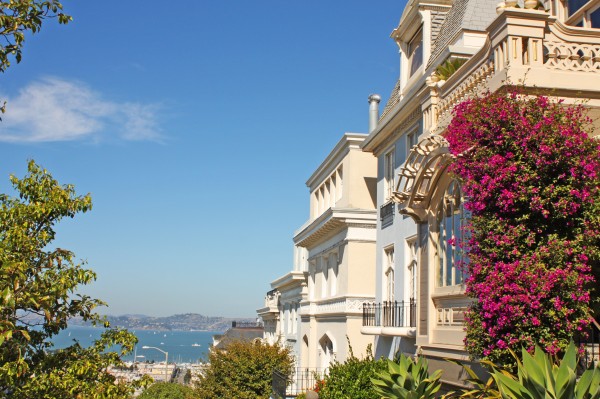

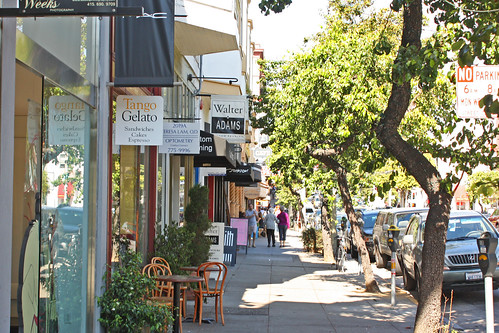


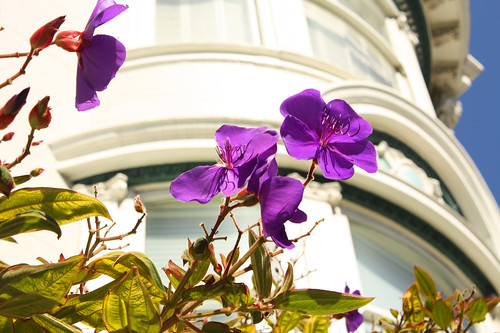
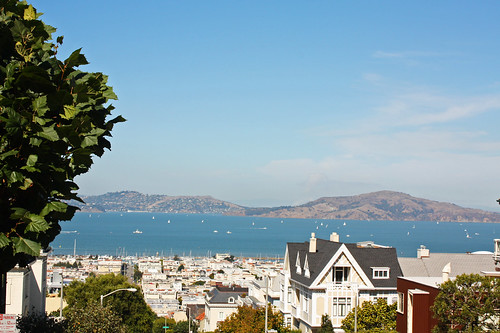
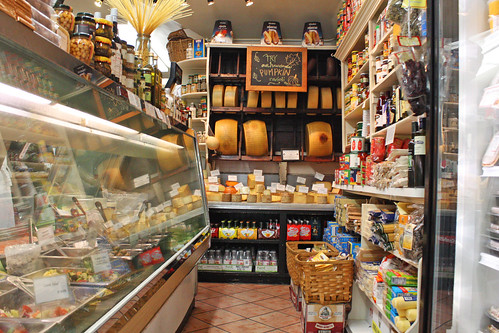

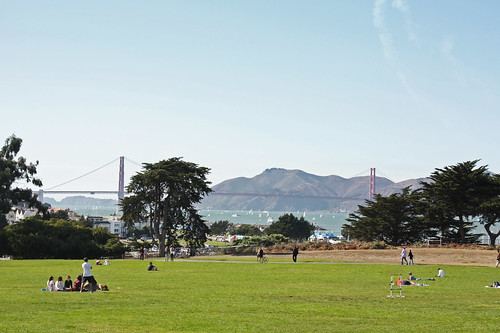
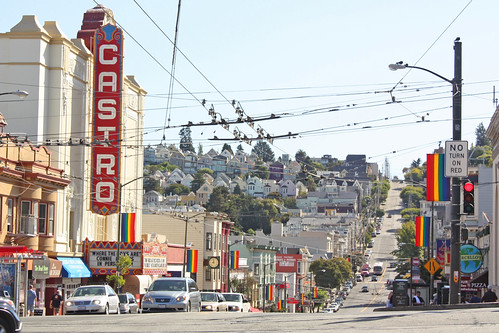

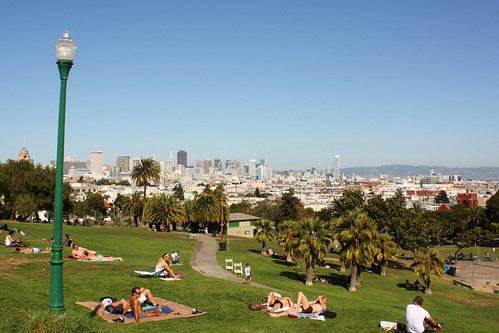
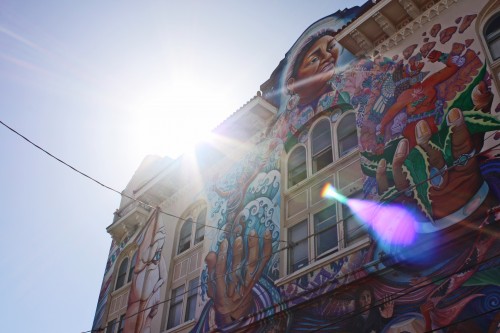
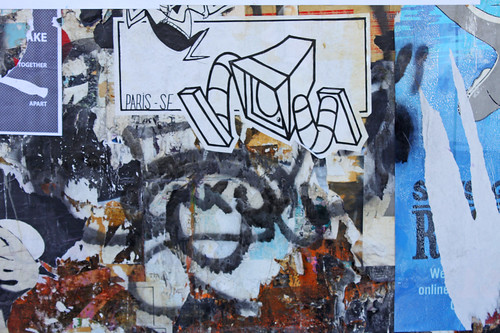
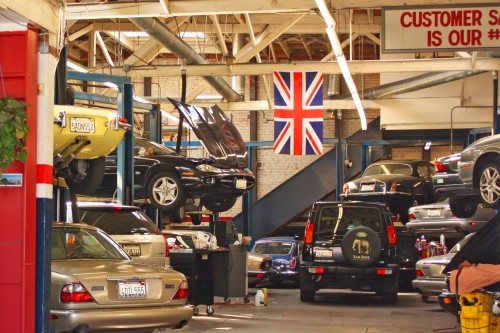


Far Out City » San Francisco in 3 Days
[…] Day 2: San Francisco’s Neighborhoods: Japantown, Pacific Heights, Marina, Castro, Mission, Low… […]
10/12/2010 at 7:57 pm
Far Out City » On foot: So your visitors want to go to Fisherman’s Wharf
[…] scraping our more adventurous Day 2: San Francisco’s Neighborhoods tour, we cobbled together a more refined day filled with local attractions and finer dining, a key […]
3/1/2011 at 12:50 pm
On Foot: Hiking Around the Golden Gate Bridge and a Baker Beach Picnic | Far Out City
[…] start our day in the lovely Marina district. As I’ve mentioned before, it’s an ideal place to stroll around and pick up gourmet items for a picnic. Once again, we […]
5/14/2011 at 12:01 pm
A Rainy Day at the SFMOMA | Far Out City
[…] Francisco day. San Francisco is best in the dazzling sunlight, when you can hike along the bay or walk up and down hills discovering new neighborhoods. Those hills are much less inviting when gale force winds and […]
7/8/2011 at 6:56 pm